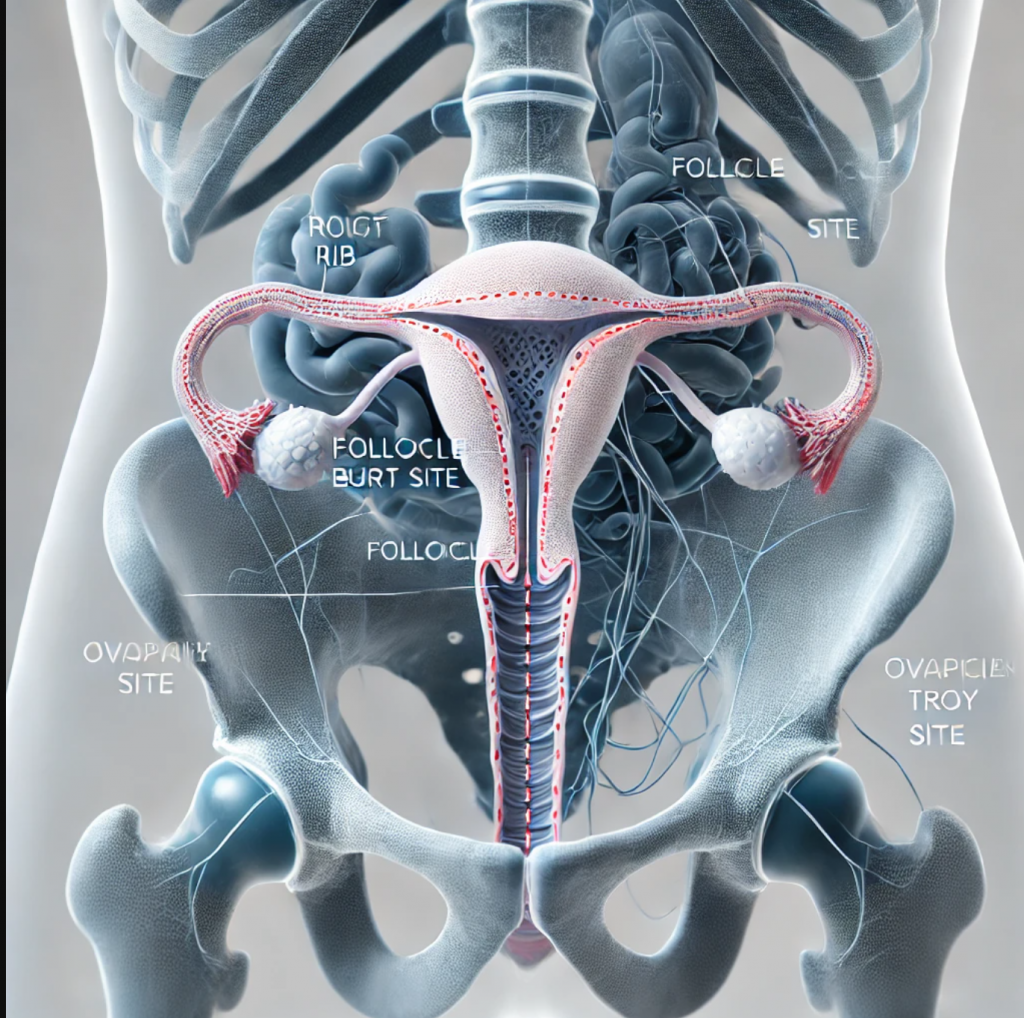Fluid that Comes Out, between Backbone and Ribs
In this noble verse, Allah describes the process of human ovulation with remarkable precision and beauty:
We are created not only from sperm, but also from the female egg. While in many other verses the Holy Quran speaks about sperm, here Allah draws our attention to the process of ovulation in women. In German, this is called “Eisprung” — literally “an egg that has sprung out” — a term that perfectly reflects the biological reality.
The Quranic expression مَّآءٍ دَافِقٍ (“gushing fluid”) corresponds strikingly to this event. The egg is enclosed in a balloon-like structure, the follicle, which is filled with fluid. At the moment of ovulation, this follicle suddenly bursts, and the egg is released together with the fluid — exactly as described by the words مَّآءٍ دَافِقٍ.
Quranic Reference
(Sūrat al-Ṭāriq 86:6–7):
خُلِقَ مِن مَّآءٍ۬ دَافِقٍ۬ (٦) يَخۡرُجُ مِنۢ بَيۡنِ ٱلصُّلۡبِ وَٱلتَّرَآٮِٕبِ
Sahih International:
He was created from a fluid, ejected, Emerging from between the backbone and the ribs.
🔹 دَافِقٍ۬ – “pouring forth” (Lane’s Lexicon) like an overfilled container suddenly bursting.
It is صفة مجرورة (adjective, genitive, masculine, indefinite, active participle), which is very important: grammatically it indicates an active force — the bursting follicle itself.
🔹 بَيۡنِ ٱلصُّلۡبِ وَٱلتَّرَآٮِٕبِ – “between the backbone and the ribs,” i.e. within the abdominal cavity where the ovaries are located, not outside the body.
🔹 يَخۡرُجُ – “it comes out,” describing the sudden emergence of the egg and fluid.
Thus, the grammar of the Quranic text aligns precisely with the biology of ovulation.
Water and Creation
Why does Allah call it “fluid of creation”?
- Water content of the human egg cell: ~75–80%
- Water content of the follicular fluid: ~90–95%
Life is bound to water, and here the Qur’an connects the bursting fluid of ovulation directly to the act of creation.
How Does Ovulation Work?
1. Follicular Development (Days 1–14)
The follicle grows until it reaches maturity (18–22 mm).
2. LH Surge (Luteinizing Hormone)
High estrogen levels from the dominant follicle trigger the pituitary gland to release a sudden surge of LH.
👉 This LH surge is the decisive trigger of ovulation.
3. Follicle Wall Weakening
The LH surge activates enzymes (collagenase, plasmin) that soften the follicle wall.
The egg detaches and floats freely inside the follicle.
4. Follicle Burst – Egg is Released
When the pressure of follicular fluid rises, the follicle ruptures.
The egg is expelled (يَخۡرُجُ) together with the fluid — all of a sudden, just as the Qur’an says: مَّآءٍ دَافِقٍ.
The Dominant Follicle as the “Active Agent”
Modern biology shows that the dominant follicle itself orchestrates the entire process:
- It produces estrogen, which builds the uterine lining.
- This estrogen also primes the pituitary gland to release LH.
- The follicle then responds to LH by weakening its own wall and bursting.
Thus, the follicle is not passive but actively directing its own rupture and the release of the egg.
This matches perfectly with the Quranic grammar: دَافِقٍ as an active participle indicates a force that is itself engaged in the act of bursting forth.
Between Backbone and Ribs
The ovulation process takes place inside the abdominal cavity, where the ovaries are located “between the backbone and the ribs.”
From a 3D anatomical perspective, when viewed from above (not front-to-back), the ovaries indeed lie in this region — fully consistent with the Quranic description.
Conclusion
Ovulation is not a random rupture, but a precisely regulated biological process in which the follicle itself plays the active role. The Qur’an’s use of مَّآءٍ دَافِقٍ — a gushing, actively bursting fluid — captures this reality with remarkable linguistic and scientific accuracy.

… Continued…